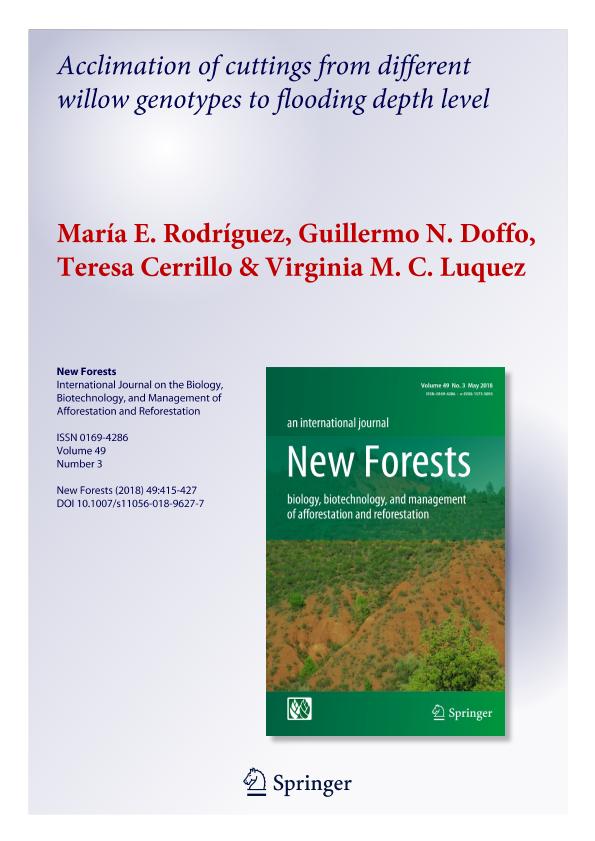Artículo
Acclimation of cuttings from different willow genotypes to flooding depth level
Rodríguez, María Emilia ; Doffo, Guillermo Nestor
; Doffo, Guillermo Nestor ; Cerrillo, Teresa; Luquez, Virginia Martha Cristina
; Cerrillo, Teresa; Luquez, Virginia Martha Cristina
 ; Doffo, Guillermo Nestor
; Doffo, Guillermo Nestor ; Cerrillo, Teresa; Luquez, Virginia Martha Cristina
; Cerrillo, Teresa; Luquez, Virginia Martha Cristina
Fecha de publicación:
05/2018
Editorial:
Springer
Revista:
New Forests
ISSN:
0169-4286
Idioma:
Inglés
Tipo de recurso:
Artículo publicado
Clasificación temática:
Resumen
Climate change will increase the frequency of extreme rain events, causing more flooding episodes. Willows are usually planted in marginal lands like flood prone areas. For willow plantations developed from rootless cuttings, the establishment phase is crucial, because the cuttings are still developing a shoot and root system and have a higher vulnerability to stress. A flooding episode during this early period may have a negative effect upon plants. We analyzed the responses to flooding of eight willow genotypes, representing important species from the economic and ecological point of view (Salix alba, S. matsudana, S. amygdaloides and S. matsudana × S. nigra hybrids). The treatments started when the plants were 2 months old and lasted for 3 weeks. They were identified as: Control (watered to field capacity); F10 (plants submerged 10 cm above soil surface) and F50 (plants submerged 50 cm above soil surface). The F50 treatment showed a greater growth reduction than the F10 treatment in most clones, either measured in height, diameter or total biomass. Both flooding treatments reduced significantly the root-to-shoot ratio compared to control plants. The F50 treatment increased the leaf nitrogen content and specific leaf area in all genotypes. Both treatments changed plant and leaf traits in different ways according to the depth of the floodwater. These changes may have lasting effects on growth recovery in the post-flooding period. Willow clones with a fast initial growth will be the best option to minimize growth reduction in areas prone to experience flooding episodes.
Palabras clave:
FLOODING
,
NITROGEN
,
ROOT-TO-SHOOT RATIO
,
SALIX SPP
,
SPECIFIC LEAF AREA
Archivos asociados
Licencia
Identificadores
Colecciones
Articulos(INFIVE)
Articulos de INST.DE FISIOLOGIA VEGETAL
Articulos de INST.DE FISIOLOGIA VEGETAL
Citación
Rodríguez, María Emilia; Doffo, Guillermo Nestor; Cerrillo, Teresa; Luquez, Virginia Martha Cristina; Acclimation of cuttings from different willow genotypes to flooding depth level; Springer; New Forests; 49; 3; 5-2018; 415-427
Compartir
Altmétricas



